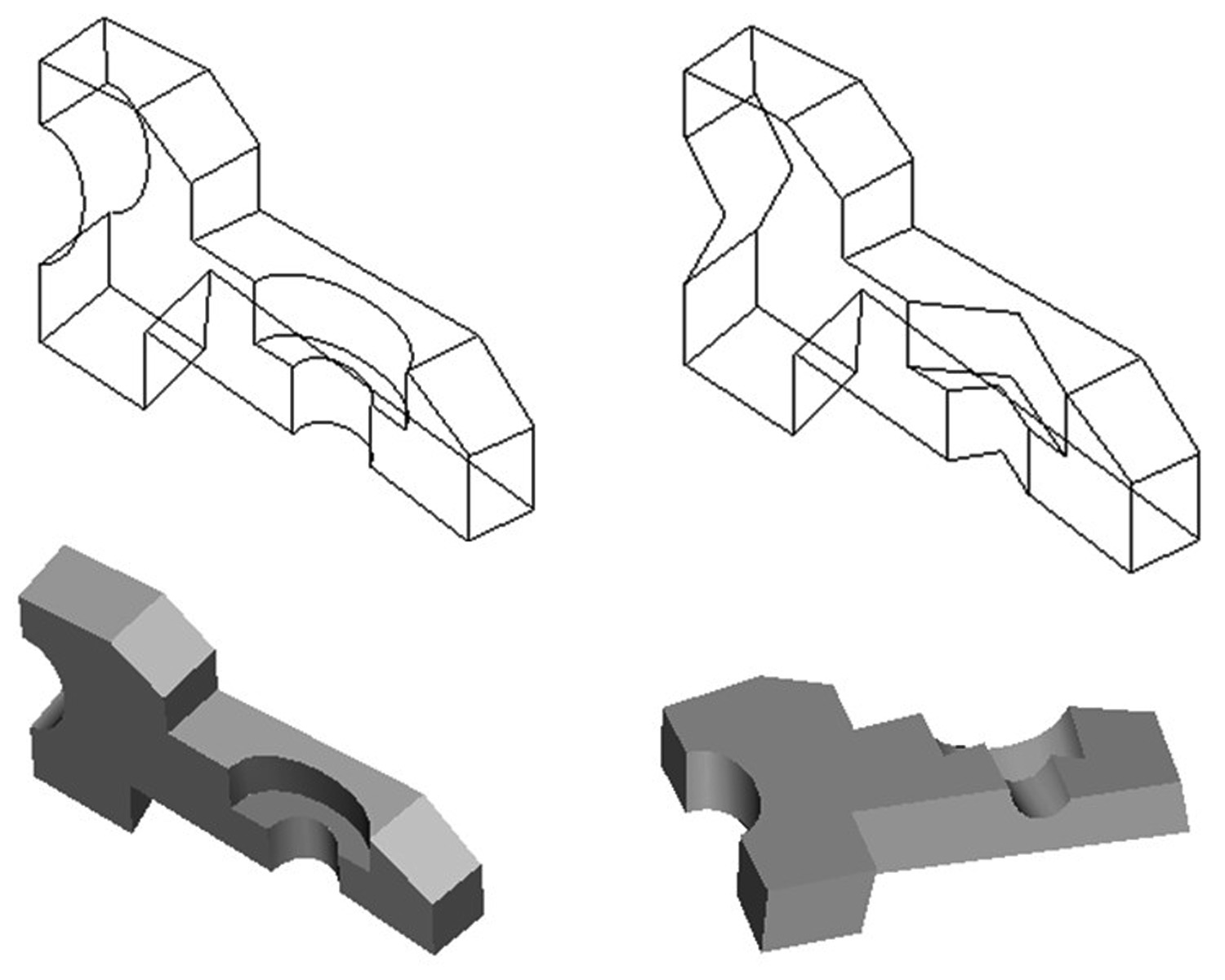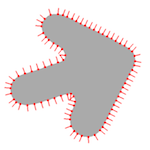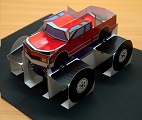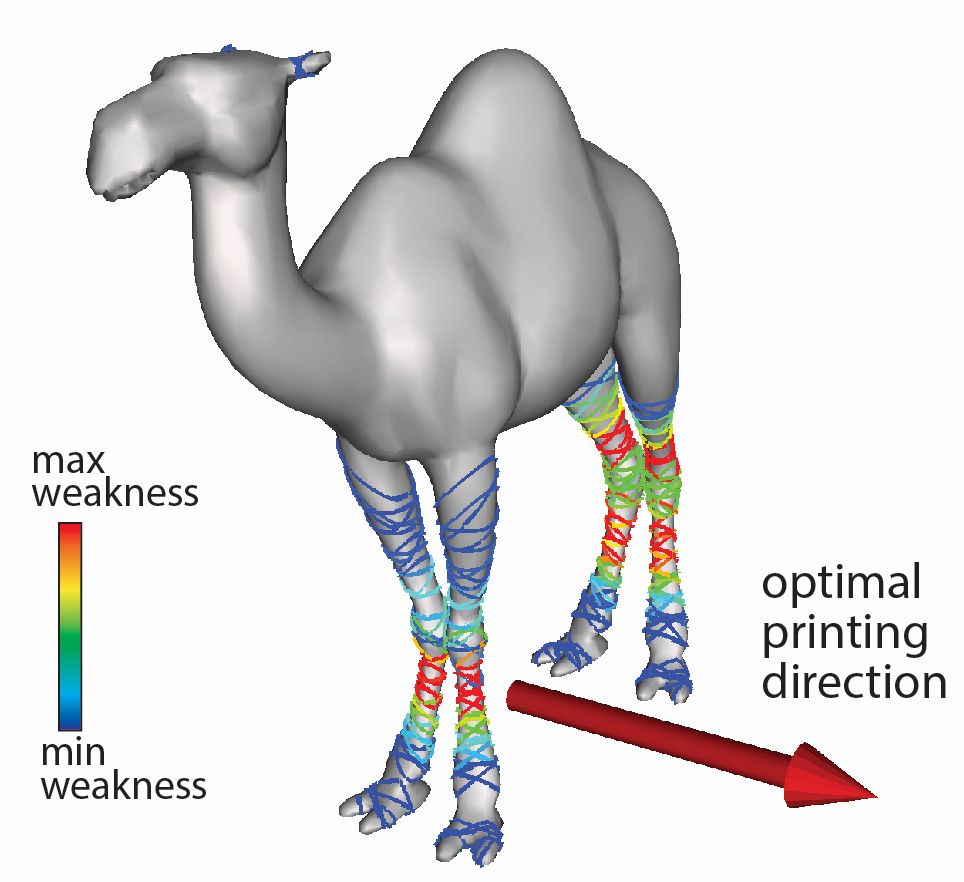
3D Reconstruction from Drawings with Straight and Curved Edges
This paper presents a method to recover solid objects from 2D drawings with both straight and curved edges. A curved edge is approximated by two straight lines, and the resulting straight line drawing is recovered as a polyhedron using an established method, and the curved object recovered from this polyhedron.
Lee Yong Tsui,Nanyang Technological University
Fen Fang, Nanyang Technological University

Non-Convex Hull Surfaces
The NCH Signed Distance function is constructed from oriented point cloud and evaluated on the vertices of a volumetric mesh, regular or adaptive, and an isosurface algorithm is used to generate a polygonal Non-Convex Hull (NCH) mesh. Despite its simplicity, this simple algorithm produces high quality polygon meshes..
Gabriel Taubin, Brown University

Progressive Medial Axis Filtration
We propose a progressive medial axis simplification method inspired from surface optimization techniques which retains the geometric intuition of the scale axis transform, and computes a hierarchy of simplified medial axes by means of successive edge-collapses that can be browsed in real-time.
We propose a progressive medial axis simplification method inspired from surface optimization techniques which retains the geometric intuition of the scale axis transform, and computes a hierarchy of simplified medial axes by means of successive edge-collapses that can be browsed in real-time.
Noura Faraj, Telecom ParisTech - CNRS/LTCI
Jean-Marc Thiery, Telecom ParisTech - CNRS/LTCI
Tamy Boubekeur, Telecom ParisTech - CNRS/LTCI

Generating Multi-style Paper Pop-up Designs using 3D Primitive Fitting
This paper presents an automatic algorithm and the underlying theory for producing paper pop-up designs from 3D models. We incorporate different pop-up styles by using a mesh abstraction technique that fits volumetric primitives unto a 3D mesh, which are later mapped to basic pop-up structures.
Conrado Jr Ruiz, National University of Singapore
Sang Le, National University of Singapore
Kok-Lim Low, National University of Singapore

Cross-sectional Structual Analysis for 3D Printing Optimization
We propose a novel cross-sectional structural analysis technique that efficiently detects critical stress inside a 3D object. Unlike finite element methods, our method does not require a volumetric mesh, enabling interactive speed. The orientation of an object is optimized to increase mechanical strength when manufactured with 3D printing.
Nobuyuki Umetani, Autodesk Research
Ryan Schmidt, Autodesk Research






